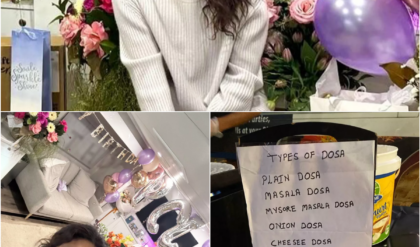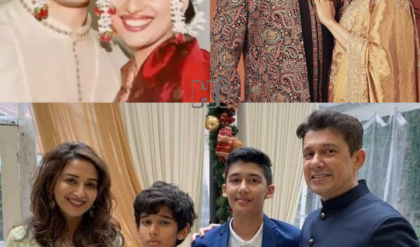Lucky Ali, a name that evokes nostalgia among music lovers, is an iconic Indian singer-songwriter who has carved a unique space in the Indian music industry. Born on September 19, 1970, in the bustling city of Mumbai, Lucky is the son of legendary filmmaker Mehmood Ali and his wife, Alvira. Growing up in a family deeply entrenched in the entertainment industry, Lucky was no stranger to the world of arts. However, his journey to fame was anything but smooth, marked by various twists of fate, struggles, and the bittersweet nature of success.
From a young age, Lucky was drawn to music. He was influenced by a myriad of musical styles, ranging from Indian classical to Western pop, which shaped his eclectic taste. However, despite his passion for music, Lucky initially ventured into other fields. He spent several years living abroad, working in various jobs, including being a part-time model and a restaurant manager. It was during this time that he honed his musical skills, performing in cafes and small venues. His experiences abroad broadened his perspective and deepened his love for music, setting the stage for his eventual return to India.
Lucky’s breakthrough came in the late 1990s with the release of his debut album, “Sunoh.” The album featured hit tracks like “O Sanam,” which became an anthem of love and longing. The song’s soulful melody, combined with Lucky’s unique voice, resonated with the youth of India. “Sunoh” was a commercial success, and Lucky quickly gained popularity. However, while many viewed him as an overnight sensation, the reality was that his journey was fraught with challenges. The pressures of fame and the expectations that came with it often weighed heavily on him.
Despite his initial success, Lucky faced a series of disappointments in the following years. The music industry, known for its unpredictable nature, brought about a decline in his career. The changing musical landscape, with the rise of pop and commercial music, created challenges for artists like Lucky, who had a more unconventional style. His subsequent albums did not achieve the same level of success as “Sunoh,” leading to a sense of frustration and disillusionment. This period became a test of Lucky’s resilience as he grappled with the harsh realities of the industry.
During this challenging phase, Lucky found solace in his music. He began to explore deeper, more personal themes in his songs, reflecting his own experiences and emotions. This introspection led to the creation of tracks that resonated with authenticity, even if they did not achieve commercial success. Songs like “Kahin Se Aaya Hai” and “Gori Teri Aankhein” showcased his ability to weave storytelling with melody, earning him a loyal fan base that appreciated his artistry.
However, the struggle was not just limited to his professional life. Lucky faced personal challenges as well, including the pressures of maintaining relationships in the tumultuous world of fame. He has been open about his experiences with love and heartbreak, often channeling these emotions into his music. His personal life has had its ups and downs, including a marriage that ended in divorce, which further complicated his journey as an artist. Yet, through it all, Lucky remained committed to his passion for music.
In the early 2000s, after a period of relative obscurity, Lucky made a comeback with the album “Suno,” which featured the hit track “Aa Dekhen Zara.” The song, infused with a modern sound, showcased his ability to adapt to changing musical trends while staying true to his roots. This resurgence introduced Lucky to a new generation of listeners, reminding them of his unique voice and musical style. However, despite this brief revival, maintaining consistent visibility in the industry proved to be an ongoing struggle.
One of the challenges Lucky faced was the increasing commercialization of the music industry. The rise of reality television and the emphasis on new, flashy artists created an environment where established artists like him sometimes struggled to find their footing. Lucky often found himself at odds with the industry’s demands, preferring to create music that spoke to his soul rather than conform to popular trends. This authenticity, while admirable, also meant that he had to navigate a landscape that was often indifferent to his artistry.
In the years that followed, Lucky opted for a more independent approach to his music. He began releasing tracks on digital platforms, allowing him to connect directly with his fans without the constraints of traditional music labels. This shift was empowering, as it gave him creative control over his work. The rise of social media allowed Lucky to engage with his audience in a way that was previously unimaginable, forging a deeper connection with those who appreciated his music.
Lucky’s journey has often been described as “unlucky,” not only because of the ups and downs of his career but also due to the perception that he never quite received the recognition he deserved. While he may not have the mainstream success of some of his contemporaries, his impact on Indian music is undeniable. Songs like “O Sanam” continue to be cherished by fans, often played at weddings and
Watch video:
News
उभरे हुए बगीचे के बिस्तरों के लिए अंतिम गाइड: अपने बागवानी अनुभव को बदलें
एक ऊंचा बगीचा बनाना एक फायदेमंद बागवानी परियोजना है जो भरपूर फसल दे सकती है और आपके बाहरी स्थान को सुंदर बना सकती है। यहां एक विस्तृत गाइड दी गई है कि कैसे एक ऊंचा बगीचा लगाया जाए, जिसमें सर्वोत्तम…
लैम्ब क्वार्टर्स/वाइल्ड पालक: अधिकतम स्वास्थ्य लाभ वाला कम आंका गया सुपरफूड
खाद्य पौधों की भरमार के बीच, लैम्ब्स क्वार्टर, या चेनोपोडियम एल्बम , एक उल्लेखनीय लेकिन कम सराहना प्राप्त सुपरफूड के रूप में उभरता है। वाइल्ड पालक, गूजफुट और फैट हेन सहित कई नामों से जाना जाने वाला यह तथाकथित खरपतवार विभिन्न वातावरणों…
टमाटर की अच्छी पैदावार का रहस्य: उन्हें एक तरफ़ से लगाना
टमाटर को एक तरफ़ से लगाना: यह क्यों काम करता है और इसे कैसे करें टमाटर को उनके किनारे पर लगाना असामान्य लग सकता है, लेकिन यह विधि ठोस बागवानी विज्ञान पर आधारित है और आपके सब्जी के बगीचे को काफी…
कार्डबोर्ड बॉक्स में पौधे क्यों लगाएं और उन्हें कैसे लगाएं
कार्डबोर्ड बॉक्स में पौधे लगाना बागवानी के लिए एक सरल, अभिनव दृष्टिकोण का प्रतिनिधित्व करता है जो सभी स्तरों के बागवानों के बीच लोकप्रिय हो रहा है। यह विधि, जिसे अक्सर बिना खुदाई के प्रभावी समाधान के रूप में प्रचारित…
टमाटर की छंटाई की कला में निपुणता: एक व्यापक मार्गदर्शिका
टमाटर उगाने के लिए सबसे लोकप्रिय और फायदेमंद पौधों में से एक है, लेकिन भरपूर फसल प्राप्त करने के लिए सिर्फ़ रोपण और पानी देने से ज़्यादा की ज़रूरत होती है। टमाटर के पौधों के स्वास्थ्य और उत्पादकता में उचित…
प्राकृतिक उर्वरकों से खीरे की उपज दोगुनी करें: एक माली गाइड
बागवानी के शौकीनों और खीरे के प्रेमियों के लिए, अपने बगीचे से ताज़े, कुरकुरे खीरे की भरपूर फसल लेने जैसा कुछ नहीं है। लेकिन क्या आप जानते हैं कि आप प्राकृतिक उर्वरकों की मदद से अपने खीरे की उपज को…
End of content
No more pages to load











